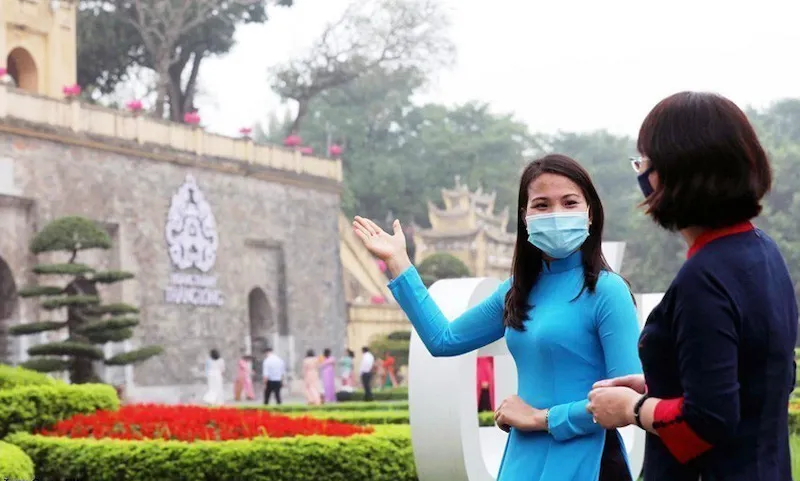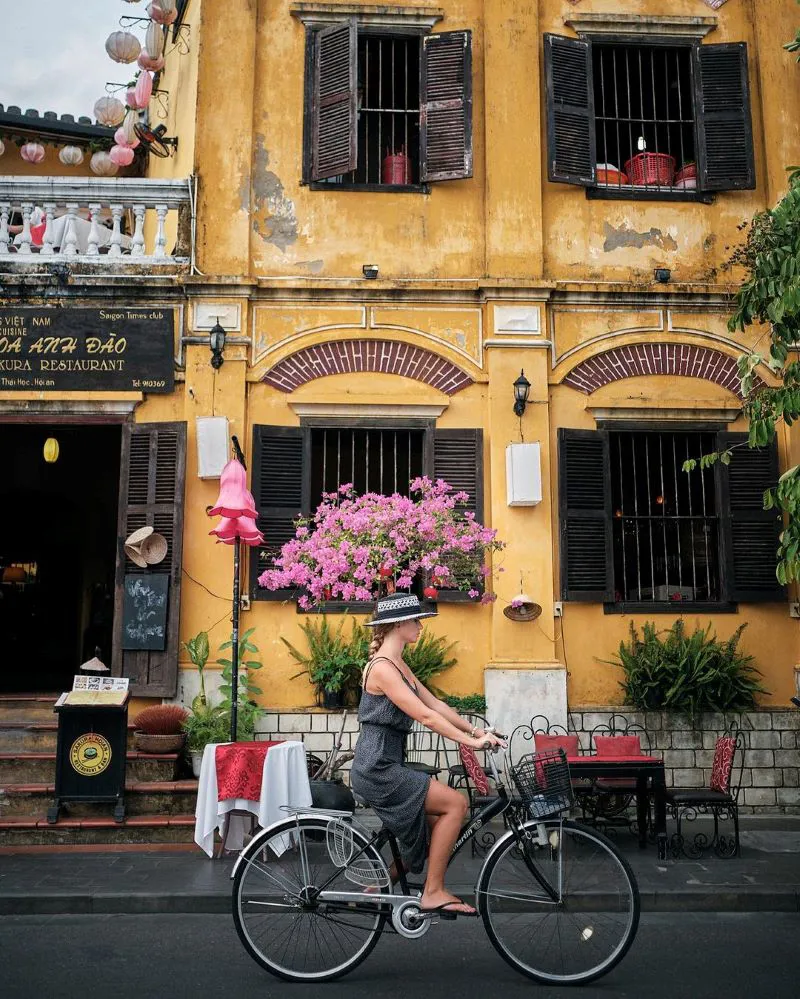Training: key to enhancing competitiveness of Vietnam's tourism workforce
The tourism industry of Vietnam is currently enjoying strong recovery and growth, but faces many challenges, including a lack of skilled manpower.
Enhancing the training of the tourism workforce is an important solution to ensure that the quality of Vietnam's tourism services meets international standards and requirements for international integration, according to a recent report by the Institute for Tourism Development Research.
Lacking skilled human resources
| Developing human talent in tourism and hospitality is a priority for Vietnam. Photo: Le Nam |
The recommendation comes from the tourism industry's current difficulties and challenges, including a shortage of high-quality human resources, which were revealed in the Institute for Tourism Development Research's recent report that the quality and labor productivity of the Vietnamese tourism and hotel industry remains weak.
Specifically, Vietnam's hotel labor productivity is only one-fifteenth of Singapore's, one-tenth of Japan's, and one-fifth of Malaysia's.
Local insiders said that Vietnam's tourism workforce is not only insufficient in size but also lacks expertise and professional skills, resulting in low service quality. To create highly competitive tourism products, the quality of tourism human resources plays a crucial role.
Pham Van Thuy, Deputy Director of the Vietnam National Authority for Tourism, said that compared to other countries in the region, Vietnamese workers are considered industrious, intelligent and eager to learn. However, the overall quality of Vietnam's tourism services is still poor, which has a significant impact on the creation of competitive tourism products.
He added that under the Mutual Recognition Arrangement on Tourism Professionals (MRA-TP), which allows for the mobility of skilled tourism workers within the ASEAN bloc, foreign tourism workers can work in Vietnam, putting their local counterparts at risk of job loss if their professional skills and work attitudes are not improved.
The Deputy Director referred to a report that Vietnam’s tourism workforce is at risk of being replaced by workers from ASEAN countries such as Thailand, the Philippines and Malaysia. Currently, there is a significant presence of workers from the Philippines, Thailand, Indonesia, and Singapore in Vietnam, who are employed by almost all four- and five-star hotels.
Thuy believes that the lack of coordinated, systematic and standardized training and use of human resources is leading to a deviation in the trained workforce: a shortage of high-level personnel and a focus on basic skills. Enterprises recruiting university and college graduates need to retrain them according to their own standards.
He called on tourism training institutions to find solutions to raise the quality of training for Vietnam's tourism workforce. First, they should develop a training program that meets international standards in the tourism industry.
Specific standards in workforce training to be established
| A foreign tourist in Hoi An Ancient Town, Quang Nam Province. Photo: Nguoi Hoi An Group |
According to the Vietnam Tourism Training Association, there are 195 tourism training institutions in Vietnam, including 65 universities with tourism departments, 55 colleges (including 10 specialized tourism colleges, eight of which are under the Ministry of Culture, Sports and Tourism), 71 vocational schools, four vocational training centers and two enterprise-related training institutions, namely the Imperial International Hotel College and the Saigontourist Hospitality College.
Dao Manh Hung, Chairman of the Vietnam Tourism Training Association, said these institutions produce about 20,000 graduates a year from a total of nearly 22,000 enrolled students. This includes 1,800 graduates from universities and colleges, 2,100 graduates from tourism vocational schools, and about 18,200 graduates from intermediate programs. In addition, there are about 5,000 students on short-term and vocational training programs of less than three months.
According to Pham Hong Long, Head of the Faculty of Tourism Studies at the University of Social Sciences and Humanities, Vietnam National University, there are three training trends in Vietnam: practical training, management research or a combination of the two. At present, there are no specific standards or criteria for internationally standardized training. This makes it difficult for institutions to develop appropriate training models.
To address this issue, he believes that institutions can adhere to international education accreditation rules, similar to the network of universities in Asia and Europe.
Long also stressed the need for regulators to establish specific standards for tourism occupations to enable institutions to develop international quality training models.
According to Duong Duc Thang, Head of the Tourism Faculty at Dong A University of Technology, traditional training methods are no longer up to the rising standards and demands of the tourism industry.
He added that today's tourism professionals not only need foreign language proficiency, but also good technological skills and the ability to make high quality products in accordance with standards. However, many local students trained in tourism departments find it difficult to compete with foreign students due to weak communication skills in foreign languages.
A need for an appropriate training policy system
Nguyen Van Luu, from the Vietnam National Authority of Tourism, emphasized the importance of an appropriate training policy system, attracting qualified teachers, improving their professional qualifications, promoting the integration of teaching and research, and supporting the improvement of training facilities.
"The policy system should be developed, improved and implemented without discrimination based on the forms of ownership of training institutions," he said.
Urs Eberhardt, Director of Southeast Asia Development at the Business and Hotel Management School, one of Switzerland's top hotel schools, said that the work environment is also one of the most important factors in attracting talented employees. The work environment should be attractive to young, dynamic and creative employees who are willing to challenge themselves and seek recognition.
He also emphasized that the tourism industry is currently using technological advances in all activities to create new experiences for customers. This requires constant learning, making the best use of technology and being flexible.













